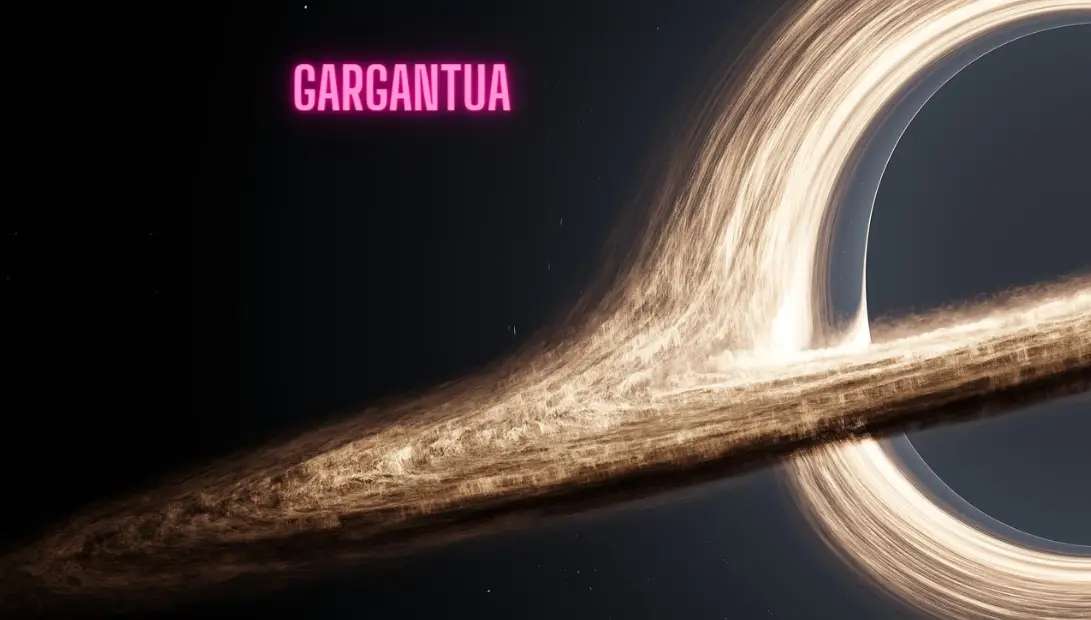Black holes are among the most mysterious and mind-boggling things in the universe; as a result, they have been a source of fascination for both scientists and the general public for many decades. Because of their tremendous gravitational force, these cosmic monsters consume everything that passes through their event horizon. Gargantua is one example of a black hole that has successfully piqued the interest of many people. But does Gargantua really hold the title of the largest black hole in the universe?
In order to get an answer to this question, we need to first comprehend what it is that makes a black hole so “big.” The mass of an object is the primary factor that decides how large a black hole will be. To put it another way, a black hole’s size is proportional to the amount of mass it contains. The matter that is sucked into the black hole becomes compacted into an exceedingly dense singularity at the center of the black hole, which is where this mass originates.
The presence of Gargantua in Christopher Nolan’s science fiction film “Interstellar” led to global recognition of the creature. In the film, Gargantua is depicted as a supermassive black hole that resides in a faraway galaxy and is encircled by a breathtaking accretion disk. However, it is essential to keep in mind that the depiction of Gargantua in the movie is a fictitious representation and is not based on any actual scientific discoveries that have been made.
In point of fact, the most enormous black holes ever discovered are supermassive black holes, which are located at the centers of galaxies. These monstrous abominations have masses that are millions or perhaps billions of times bigger than that of our star, the Sun. It is believed that the galaxy Holm 15A is home to the black hole with the greatest mass, which has been estimated to be approximately 40 billion times greater than that of the Sun. This supermassive black hole, also known as Holmberg 15A*, has a mass that is an order of magnitude greater than that of Gargantua.
Even if Gargantua is not the biggest black hole, the movie “Interstellar” made an effort to show it in a way that was scientifically accurate in some ways. This is something that should be noted. Kip Thorne, a physicist who was awarded the Nobel Prize for his work on gravitational waves, was contacted by the movie in order to guarantee that its representation of a black hole was as accurate as it could be.
The movie version of Gargantua was constructed with the use of computer-generated imagery (CGI), which was based on the mathematics and simulations developed by Thorne. The goal of the team responsible for the visual effects was to accurately show the accretion disk, the warping of spacetime, and the bending of light that occurs around a black hole. The end product was a magnificent and scientifically accurate depiction of what a black hole may look like from an extremely near distance.
It is essential to keep in mind that our knowledge about black holes is continuously expanding as a result of new discoveries made by scientists and the accumulation of further data. Astronomers are always on the lookout for new black holes and working to improve our understanding of the characteristics that define them. This endeavor requires the use of robust equipment and cutting-edge research methods.
Despite the fact that Gargantua may not be the greatest black hole known to science, its depiction in the film “Interstellar” managed to pique curiosity among the general public and foster a passion with cosmic phenomena. Movies like “Interstellar” help to the popularization of science and promote more inquiry and discovery by stretching the limits of our imaginations and pushing them to new places.
To sum things up, the black hole known as Gargantua is not the largest one in the universe. The supermassive black holes that can be located at the centers of galaxies, like Holmberg 15A*, have a far higher mass. Despite this, the introduction of Gargantua in “Interstellar” featured a scientifically accurate picture of a black hole, which helped raise public understanding and interest in these alluring phenomenon. Who knows what other amazing black holes we might find in the enormous expanse of the cosmos as our knowledge increases; who knows where they might be.
![]()
